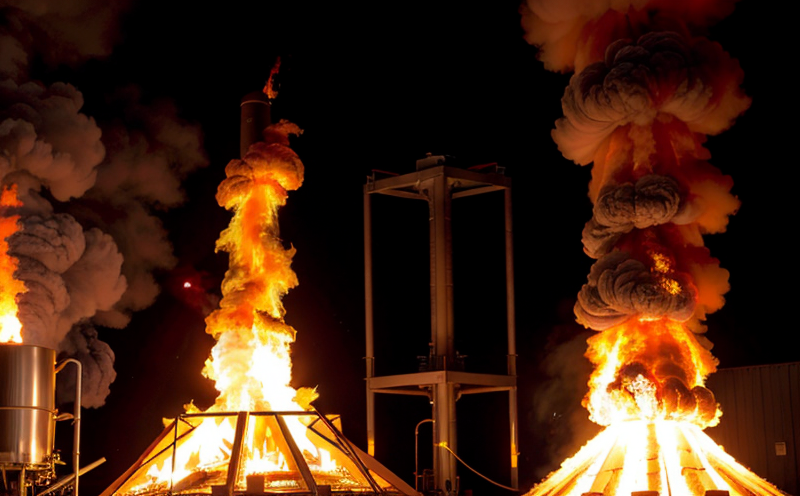Composite Material Flammability Testing
Flammability testing of composite materials is a critical process that ensures safety and compliance in various industries. Composite materials, such as carbon fiber-reinforced polymers (CFRP), are widely used due to their high strength-to-weight ratio and durability. However, the unique composition of these materials can pose challenges for accurate flammability assessment.
Flammability tests determine how a material reacts when exposed to fire. This includes understanding its ignition temperature, heat release rate, flame spread characteristics, and smoke production. Accurate testing is essential because even minor discrepancies in the test setup or specimen preparation can lead to inaccurate results, which could compromise safety standards.
The ASTM E648-17 standard provides a framework for thermogravimetric analysis (TGA) of nonmetallic materials like composites. This method measures weight loss over time under controlled temperature conditions. The TGA test helps identify the thermal stability and oxidation behavior of composite materials, which are crucial factors in assessing flammability.
Another important test is the UL 94 standard for flame retardant plastics. While this standard focuses on plastic materials, it can be adapted for certain types of composite materials. The UL 94 V-0 rating indicates that a material has passed stringent tests, demonstrating excellent resistance to ignition and self-extinguishment.
For more comprehensive assessments, the ISO 13672 standard can be applied. This international standard covers the determination of heat release rate using a cone calorimeter. The cone calorimeter measures the amount of heat released by burning materials under specific conditions, providing valuable insights into the flammability behavior.
In addition to these standards, we also conduct tests in accordance with EN 13823, which covers the determination of smoke production index using a vertical tunnel apparatus. This test evaluates how much smoke is produced by a material when it burns, helping to assess its potential impact on indoor environments.
| Industry Sector | Application |
|---|---|
| Aerospace | Ensuring that composite materials used in aircraft structures meet stringent safety standards. |
| Automotive | Evaluating the fire resistance of interior components and structural elements to comply with automotive safety regulations. |
| Military/Defense | Determining the flammability characteristics of materials used in military equipment to ensure operational reliability. |
| Construction | Assessing the fire safety properties of composite materials used in building constructions, such as insulation and structural supports. |





